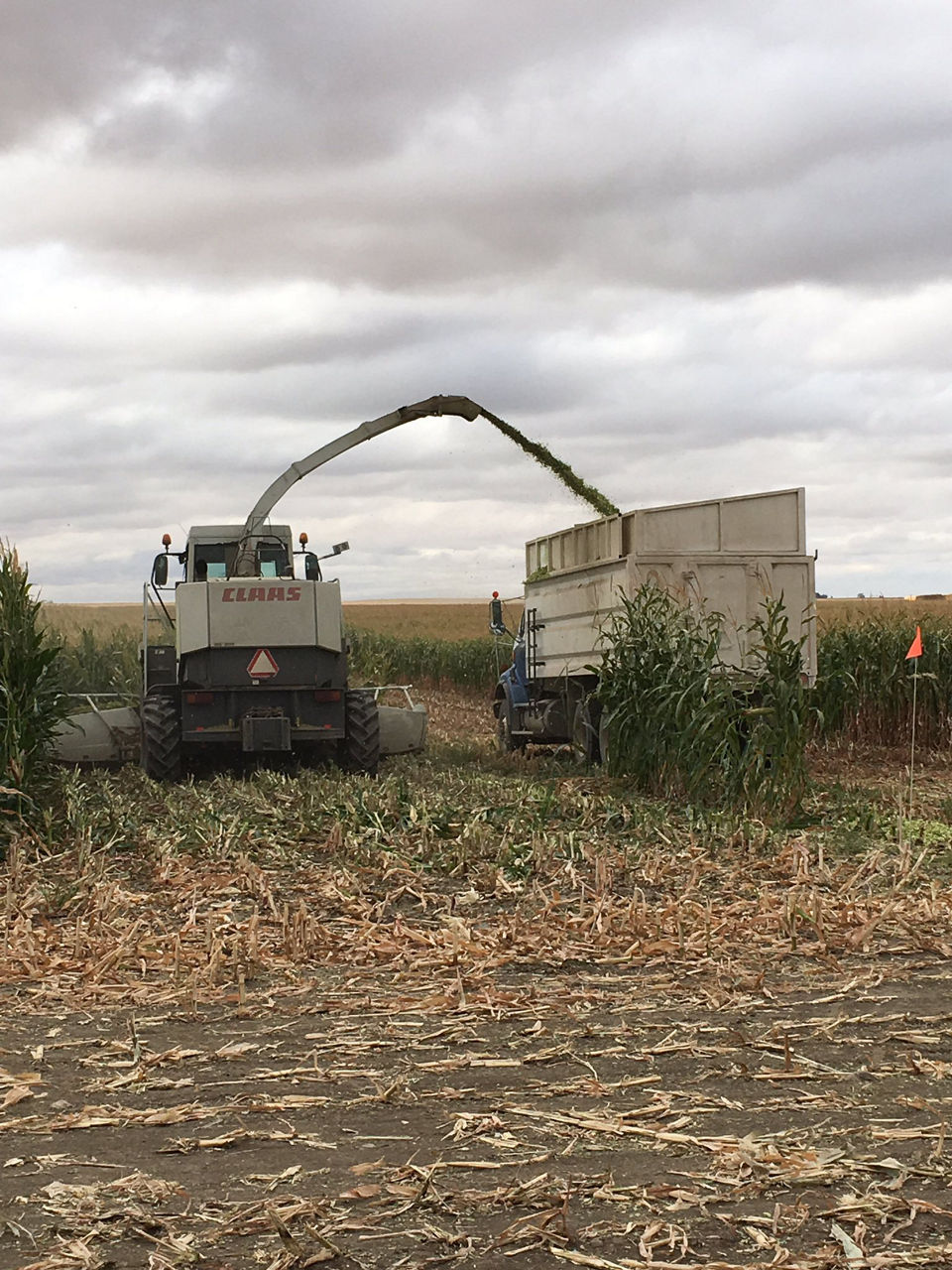Advantages of High-Chop Corn Silage
June 10, 2024
Silage Nutritive Value
The increased quality of high-chop silage has led dairy herdsmen to explore the nutritional value of this type of silage in dairy rations. A study on increasing corn silage chopping height from 5 to 18 inches was harvested early (between 1/3 and 2/3 milk line) and late (at black layer) to differentiate dry matter levels.1 The researchers found the following nutrient composition trends from the higher silage chopping height:
- Increased concentration of starch and neutral detergent fiber digestibility (NDFD).
- Decreased neutral detergent fiber (NDF) and acid detergent fiber (ADF) levels. Lower levels of both NDF and ADF increase feeding value.
- Decreased acid detergent lignin in early-harvested high chop.1
Cow Performance and Feed Intake
Dry matter intake, protein concentration of the ration, and cow age affect the milk yield response to changes in feed quality. Older cows are expected to have a milk yield response to feedstocks with increased nutrients compared to first time lactation cows.2 In studying milk production, the trends from feeding silage with a chopping height of 18 inches versus 5 inches were:
- Greater tendency for improved NDFD in the total tract.
- More calculated milk per ton of early harvested high chop silage compared to late-harvested high chop silage or normal height chop silage.
- Improved feed efficiency.
- Similar milk per acre yield for both chopping heights.1
A nutritionist may lower feeding rates as high producing cows maintain milk production. Generally, the benefits of higher chopping height are attributed to leaving the fibrous and highly lignified stems in the field. At the same time, highly digestible leaves and grain make up a greater portion (40 to 50%) of plant weight.1 See the article Interpreting Corn Silage Quality Test Results: https://www.cropscience.bayer.us/articles/bayer/interpreting-corn-silage-quality-test-results for more information on desired ranges of total digestible nutrients.
Silage Quality and Yield
A silage yield loss of 15% was reported for increasing the cutting height from 6 to 18 inches.3 Fields producing an average of 20 tons per acre of silage could harvest 17 tons per acre if switching to high-chop silage. Milk per acre is a parameter that considers silage yield and quality. It is calculated by taking milk per silage ton and multiplying by dry matter yield per acre. Based on the improved quality of silage, the dairy herdsman can expect a high-producing herd to make up for silage yield loss with milk yield gains.

Dry Matter Production and Harvest Timing with Whole Plant Moisture Content
Silage harvest timing depends on whole plant dry matter (DM). When conditions are hot and plants are healthy, kernel moisture has a greater influence on whole plant DM compared to stover.4 The reverse occurs in seasons with prevailing cool, wet conditions; stover moisture drives dry down and silage harvest time.
As plants dry down from top to bottom, the bulk of moisture remains within the lower stalk of corn plants. When upper stalks make up the greater portion of harvested material, whole plant moisture is lower and allows for earlier harvest. Whole plant DM recommendations are in the range of 32 to 38% but vary based on the silo type.4 Hot, dry weather during grain filling can cause rapid dry down of upper leaves or top die back and an earlier harvest can be timed to maintain silage quality with a higher chop height. See this article Utilizing Drought-Stressed Corn for Silage: https://www.cropscience.bayer.us/articles/bayer/utilizing-drought-stressed-corn-for-silage for additional information on the benefits of high-chop silage during drought years.
Lignin adds undigestible fiber, but not energy to a ration. Lignin content increases as plants mature or are stressed by high temperatures. High-chop silage can help maintain lower lignin levels by leaving the lower portion of stalks in fields.
Conclusion
Feeding high-chop silage to high producing cows can help return more milk to farmers. Nutritional differences in the upper part of corn plants have led to exploring milk yield gains from high-chop silage. Additionally, harvest timing is flexible as higher moisture levels of lower stalks can be left in fields. Contact your seed representative to discuss the best silage corn seed for your operation.
Sources
1 Neylon, J.M. and Kung Jr., L. 2003. Effects of cutting height and maturity on the nutritive value of corn silage for lactating cows. Journal of Dairy Science. Vol 86(6) 2163-2169
2 Alstrup, L., Weisbjerg, M.R., HymØller, L., Larsen, M.K., Lund, P., and Nielsen, M.O. 2014. Milk production response to varying protein supply is independent of forage digestibility in dairy cows. Journal of Dairy Science. Vol 97(7) 4412-4422. https://doi.org/10.3168/jds.2013-7585
3 Lauer, J. 1998. Corn silage yield and quality trade-offs when changing cutting height. University of Wisconsin. Agronomy Advice. https://corn.agronomy.wisc.edu/AA/A020.aspx
4 Lawrence, J. and Kerwin, A. 2021. Fact sheet 5: corn plant dry down. Cornell College of Agriculture and Live Sciences, Ithaca - New York. Cornell PRO-DAIRY. PD-2021-07-04
1227_381651